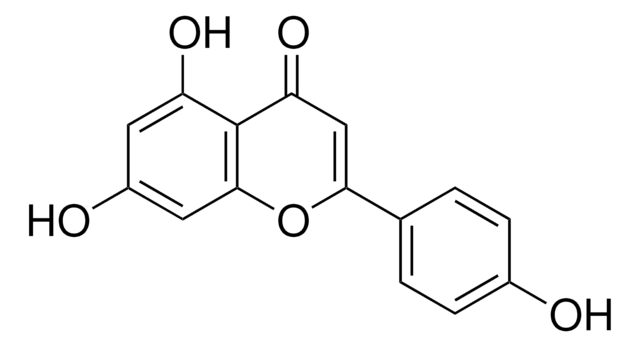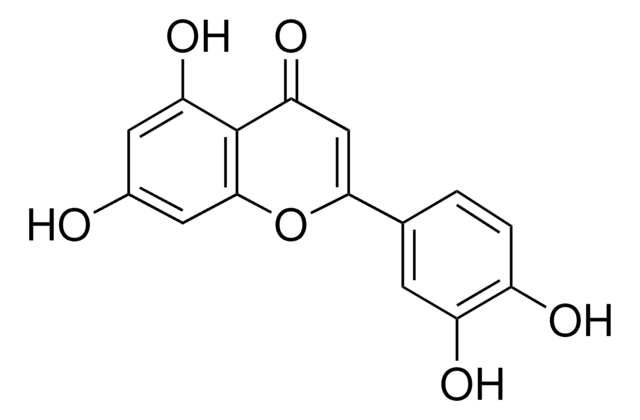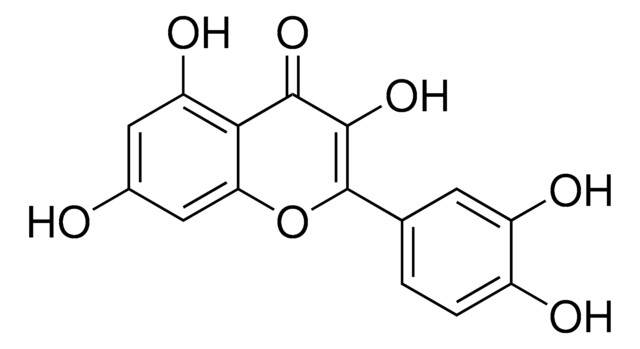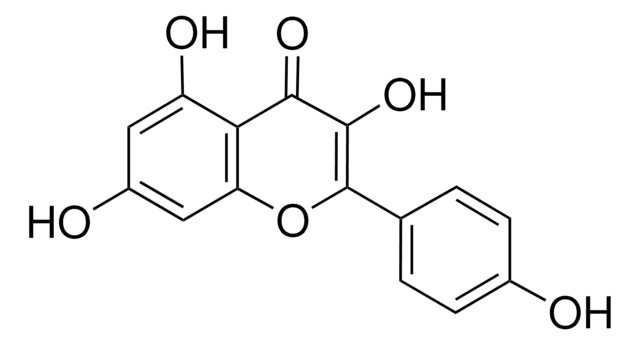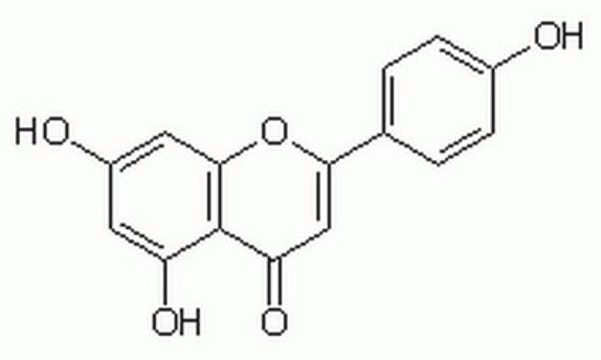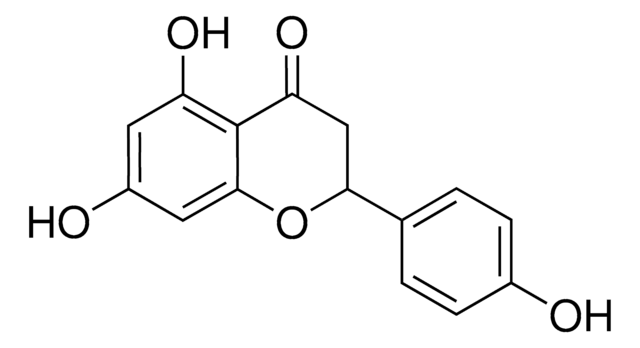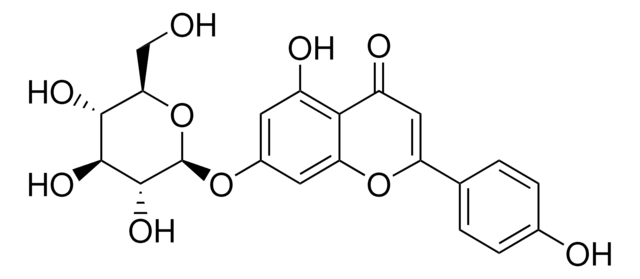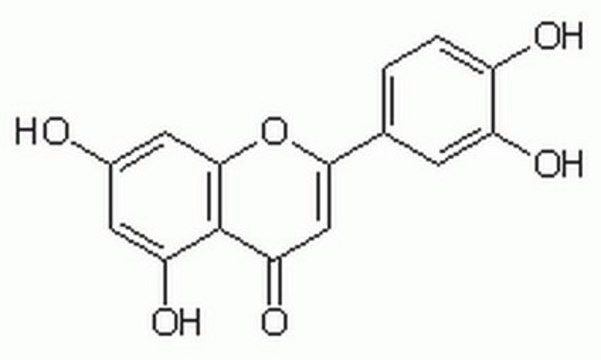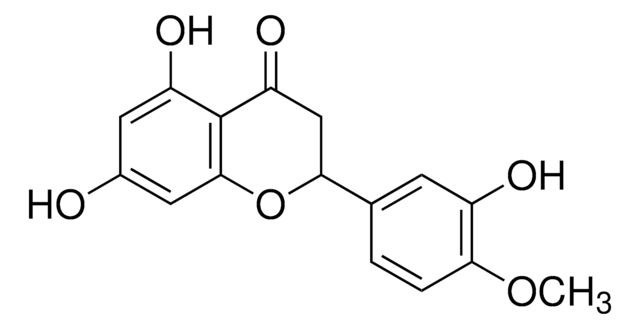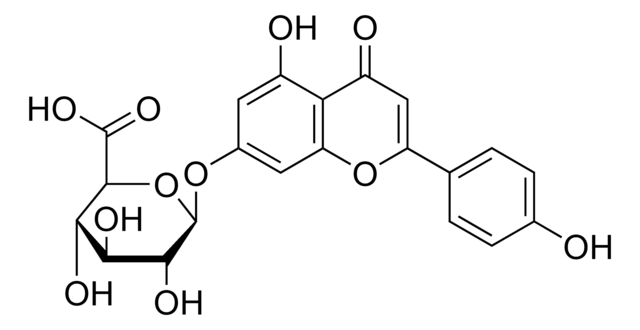SMB00702
Apigenin
≥97% (TLC), from citrus
Synonym(s):
4′,5,7-Trihydroxyflavone, 5,7-Dihydroxy-2-(4-hydroxyphenyl)-4-benzopyrone
About This Item
Recommended Products
Quality Level
assay
≥97% (TLC)
form
powder
mp
>300 °C (lit.)
solubility
DMSO: 27 mg/mL
1 M KOH: 50 mg/mL
application(s)
metabolomics
vitamins, nutraceuticals, and natural products
storage temp.
−20°C
SMILES string
Oc1ccc(cc1)C2=CC(=O)c3c(O)cc(O)cc3O2
InChI
1S/C15H10O5/c16-9-3-1-8(2-4-9)13-7-12(19)15-11(18)5-10(17)6-14(15)20-13/h1-7,16-18H
InChI key
KZNIFHPLKGYRTM-UHFFFAOYSA-N
Gene Information
human ... ADORA3(140) , CDC2(983) , CDK5(1020) , CDK6(1021) , CYP1A2(1544) , ESR1(2099) , ESR2(2100) , GSK3A(2931)
mouse ... Hexa(15211)
rat ... Adora1(29290) , Adora2a(25369) , IL4(287287) , Tnf(24835)
Looking for similar products? Visit Product Comparison Guide
Related Categories
General description
Application
- to test its anti-cancer effects as a reference agent to treat various digestive track and liver cancer cells in in vitro studies
- as stimuli and inhibitor to test its anti-inflammatory effects on in vitro inflammatory responses due to dietary and metabolic changes of rural- and urban-living Tanzanians
- as a reference standard to identify the phenolic compounds in olive mill wastewater and pomace
Biochem/physiol Actions
wgk_germany
WGK 3
Certificates of Analysis (COA)
Search for Certificates of Analysis (COA) by entering the products Lot/Batch Number. Lot and Batch Numbers can be found on a product’s label following the words ‘Lot’ or ‘Batch’.
Already Own This Product?
Find documentation for the products that you have recently purchased in the Document Library.
Customers Also Viewed
Our team of scientists has experience in all areas of research including Life Science, Material Science, Chemical Synthesis, Chromatography, Analytical and many others.
Contact Technical Service